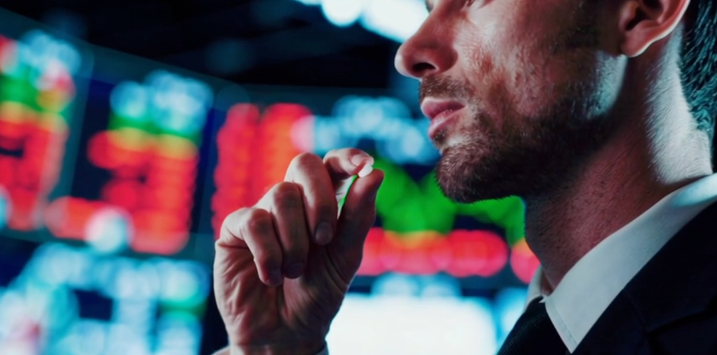
The ASX needs a NAD+ pill
On the surface, evidence shows that the Australian Securities Exchange (ASX) may be at a crossroads. Companies like James Hardie are jumping ship for U.S. primary listings, Australian investors are piling into American stocks, and local unicorns like Canva might not even glance at the ASX for their big initial public offering (IPO) debut. It’s not a collapse – yet; remember, Guzman Y Gomez (ASX:GYG) chose Australia over a U.S. listing – but the cracks are starting to show. Is the ASX in trouble or just stuck in a tough spot?
Look at James Hardie. On 23 March, 2025, it locked in an U.S.$8.75 billion merger with Azek Company Inc (NYSE:AZEK), a U.S. building products company. The result? Its primary listing shifts to the New York Stock Exchange (NYSE), leaving the ASX with a secondary role via Chess Depositary Interests (CDIs). This isn’t a one-off either.
Newmont (ASX:NEM), after buying Newcrest in 2023 for US$16.8 billion, also made the NYSE its home base. Why the U.S.? It’s simple: deeper liquidity, a massive investor pool, and a front-row seat to global markets. For James Hardie, pairing with AZEK means doubling down on the U.S. housing boom. For Newmont, it’s about running the world’s biggest gold operation from a central hub. The ASX isn’t failing these companies – it’s just not big enough for their ambitions.
Meanwhile, Australian investors are voting with their wallets. They’re snapping up U.S. stocks – especially the “Magnificent 7” like Apple, Microsoft, and Nvidia – at a growing clip. Platforms like Stake and CommSec report surging interest in American shares, with Aussies drawn to the tech giants’ thematic growth stories.
The ASX, by contrast, is ruled by financials and materials. The S&P 500/ASX 200 is dominated by banks like the Commonwealth Bank of Australia (ASX:CBA) and miners like BHP (ASX:BHP) – steady, reliable, but not exactly sexy in terms of global growth prospects. And while Tech exists here in Australia, Atlassian’s (NASDAQ:TEAM) success is though it’s primarily NASDAQ-listing.
Investors, of course, aren’t abandoning the ASX entirely; juicy dividends are boosted by franking credits, which pension-phase retirees can’t do without. But for growth, U.S. company policy retains much of the profits, rather than paying them out as dividends, helping to accelerate the beauty of compounding.
Then there’s the Canva question. Born in Sydney, this design platform’s now worth $26 billion and serves millions worldwide. If it goes public, the ASX might not even get a look-in.
The U.S. – NASDAQ or NYSE – arguably offers more capital, better visibility, and a natural fit for a company with a global footprint.
But it’s not just about Canva. Australia’s IPO market is sputtering. In 2024, new listings hit their lowest level in nearly a decade, dragged down by global volatility, higher interest rates, and a regulatory quagmire. Companies turned to private equity for capital or an exit instead of an ASX listing that required burdensome continuous disclosure requirements.
Getting a prospectus through the ASX and the Australian Securities and Investments Commission (ASIC) can take a month or more – compare that to the U.S., where things move faster. The ASX knows it’s lagging; execs are talking up dual-class shares to tempt tech founders and pleading with regulators to ease the burden. But if Canva and the next wave of unicorns skip town, the ASX misses out on the growth engines it desperately needs.
Don’t write off the ASX yet
It’s still a A$2.7 trillion market, a powerhouse for resource giants like Rio Tinto (ASX:RIO) and a haven for income-focused investors. Mining isn’t going anywhere – Australia’s iron ore and lithium keep the world turning. And those big four banks remain dividend machines that pump cash into super funds and retail portfolios.
But it’s the slow bleed of primary listings, the pull of U.S. stocks, and a drying IPO pipeline are the real threats. To fight back, the ASX needs to adapt – slash the red tape, court tech firms with founder-friendly rules, and give global players a reason to stay. And I hate to suggest it, but some founders prefer the idea of a share register with different classes of shares that enable them to sell down but retain control.
The ASX isn’t on life support. It’s a vital cog in Australia’s economy, and it’s not about to vanish. But its place in the world, and in the mind of Aussie investors, is shrinking. If it doesn’t evolve, it risks settling into a comfy niche – great for dividends, less so for ambition – while the U.S. exchanges run the show.
As one friend mused, ‘the clock’s ticking, and the ASX needs to step up or step aside’.